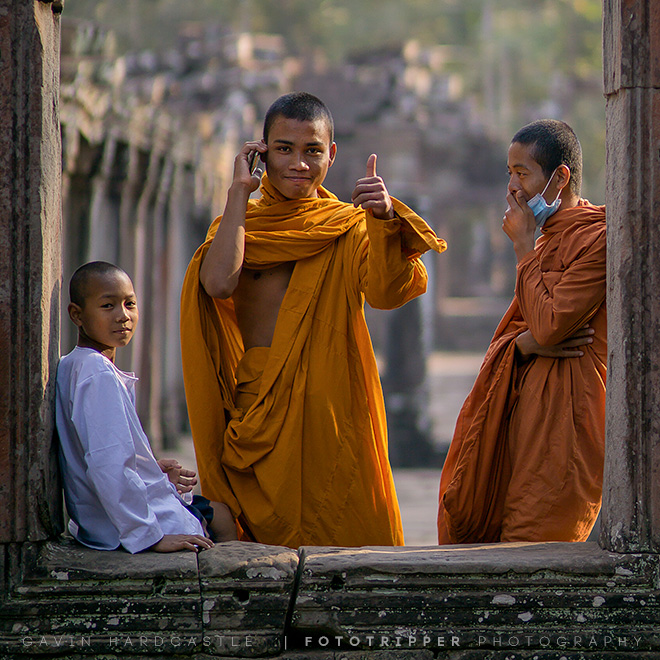
The more I use this camera, the more I love it. Here’s the scenario – I often shoot timelapse sequences with my main camera the Sony A7R (Read my Sony A7R review here) and that means I need a second camera to continue shooting stills while I wait for the timelapse shooting to finish. So, here’s my in depth Sony A6000 review.
Enter the Sony A6000, the logical solution for a backup camera if you’re already using a Sony mirrorless for your main camera. Even if you’re a Canon or Nikon shooter, the A6000 is the ideal second camera to get you into the mirrorless game.
The Price is Right
A lot of my love for the A6000 stems from the fact that it is priced very aggressively. Currently at around $700 Canadian dollars for the A6000 and the 16-50mm kit lens, you’ve got everything you need to get up an running as a travel photographer in the tiniest package available.
Size Matters
I recently held my perished old Canon 5DmkII with a super wide angle lens and couldn’t quite believe that I used to lug that wrist mangling brick all over the world. Fair enough, the A6000 has a smaller APS-C sensor but with the right lens choice I could actually pack a lot of wide angle goodness into those 24.3 megapixels.
Image Quality
Even with the crappy 16-50mm kit lens, you can capture some excellent images if you know what you’re doing. Put a proper Zeiss lens on this camera and all of a sudden you’ve got outstanding image quality in a tiny package that costs a fraction of similar DSLR offerings and won’t give you repetitive strain injury.
Dynamic Range
Dynamic range is very good with the A6000, shadow detail is superb when shooting at low ISO settings and the highlight recovery is also impressive. When shooting at ISO 100 during blue hour I’m able to recover a lot of shadow detail in my RAW files before noise becomes an issue. Here is an example.
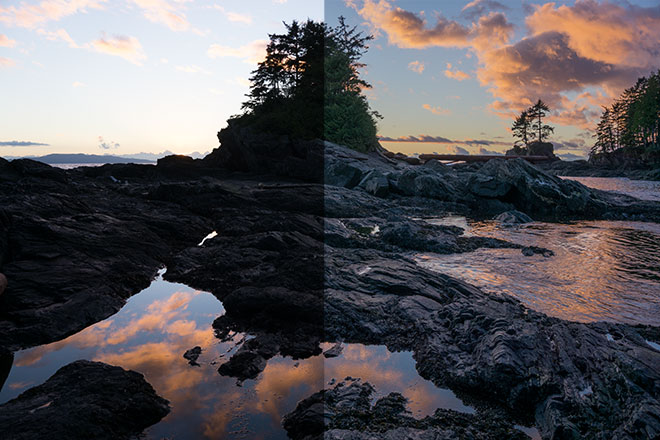
Using only the shadows and highlights sliders in Adobe Camera Raw I was able to fix the blown out highlights and dark shadows with minimal increase in noise.
Noise Performance
Don’t expect amazing results when shooting handheld at high ISO. This is not the A7S or the A7R and you’ll see why the A6000 has such a low price tag when compared to it’s more expensive siblings. High ISO action shots in low light were something of a disappointment but when you factor in the price tag – you get what you pay for.
Sharpness
It would be silly of Sony to give us as much image sharpness in this camera as lets say the A7R, but in all honesty it’s not far off. Even without the removal of the anti-aliasing filter that seems to give the A7R the edge, (pun intended) the Exmor sensor in the A6000 gives incredibly sharp images if you use proper technique and a good quality lens.
This can be said of most cameras that were made in the last couple of years. Even some of my old 5D2 shots have outstanding sharpness when using the Zeiss Distagon 21mm. It’s all about how you choose to shove the light into that sensor.
Video Image Quality
One cool feature about the A6000 is that is boasts the AVCHD codec for recording video, While this is vastly superior to the video quality on the Sony A7R ,it’s not as good as the video quality on the even cheaper A5100 mirrorless camera.
The bean counters in the Sony accounting department must have had something to do with that annoying decision. Another annoyance for videographers is the fact that there is no volume control for the built in microphone. You’ll just have to get people to take louder…or quieter depending on how close they are. Rubbish.
Ergonomics and Handling
With the tiny kit lens, this camera feels great in the hand. It weighs less than a poor mans wallet and shouldn’t be any trouble for even the daintiest of wrists.
With the native E-Mount lenses this camera feels small yet easy to handle with dedicated thumb and finger controls for aperture and EV. If it didn’t have those it would be a deal breaker (like the A5100).
When you add an adapter in order to attach your legacy lenses, things get a little ridiculous in the handling department where the cameras looks more like a ‘lens attachment’.
E-Mount Lens Choices
Unlike it’s bigger full frame brothers in the A7 range, there is a good selection of E-Mount lenses for the crop sensor of the A6000. If you’re already invested in the Sony NEX or Alpha line of cameras you’ll be in good company here.
You can of course, use lens adapters to fit the A6000 with your Canon or Nikon glass as well as many other ‘exotic’ lens options like Voigtlander, Mitakon, Leica etc. There’s even some talk that Sigma will soon start to manufacture glass specifically for the E-Mount. A decent and affordable choice for wide angle landscapes on the A6000 is the Sony 10-18mm f/4 which was designed specifically for APS-C sensors.
The Shutter of Silence
Unlike its raucous big brother the A7R, the A6000 has a barely audible shutter. While this is great for James Bond spy cam shots or shooting snow leopards from a blind, I actually prefer the colossal slap of the A7R shutter.
If a super quiet shutter is to your liking, you’ll love the A6000.
Tilt Screens are Now Standard – Wake up Canikon
I find it outrageous that the likes of Canon and Nikon don’t bother to included tilt screens on their $2k+ DSLR cameras when the likes of the A6000 offer it as standard. I hear that Nikon is now ‘Uncompromising’. Sounds like marketing claptrap to me guys. They offer it in their low end cameras but the loyal big spenders that purchase cash grabs like the D810 are SOL.
Fast Autofocus
One of the big sales features of the A6000 is the fast auto focus and the focus tracking of moving subjects. While this is not something I often need to use it’s nice that Sony have ensured the A6000 is up there with some of the fastest in the game.
Battery Life? You had to ask didn’t you.
If you’re new to this mirrorless movement, prepare yourself for some crushing news. These tiny little cameras use tiny little batteries and that means that you can expect the life of your battery to be tiny too. Although not quite as bad as the battery life on the new Gopro Hero 4 (I’ve had sneezes that lasted longer), the A6000 battery life is still pretty bad.
Needless to say that if you buy this camera, you should immediately invest in a couple of spares and ideally a wall charger. Luckily all of these new Sony Alpha mirrorless cameras use the same batteries so I can use the same batteries as the A7R.
Are You Going to Buy This Camera?
The A6000 is ideal as a lightweight second camera. Having the luxury of using a dedicated camera for lets say ‘portraits’ while your main camera is setup for ‘landscapes’ makes travel photography a lot of fun. I’d much rather grab a second camera than mess around switching lenses in a fast moving situation.
That being said, if you’re only in the market for one camera that has amazing image quality you’ll probably spend the extra dollars and go for the A7R or A7S if you shoot a lot of low light images.
While the A6000 is a total bargain for the asking price, you do get exactly what you pay for and not much more. When you factor in that small price tag, there’s still a lot to love about the Sony A6000.

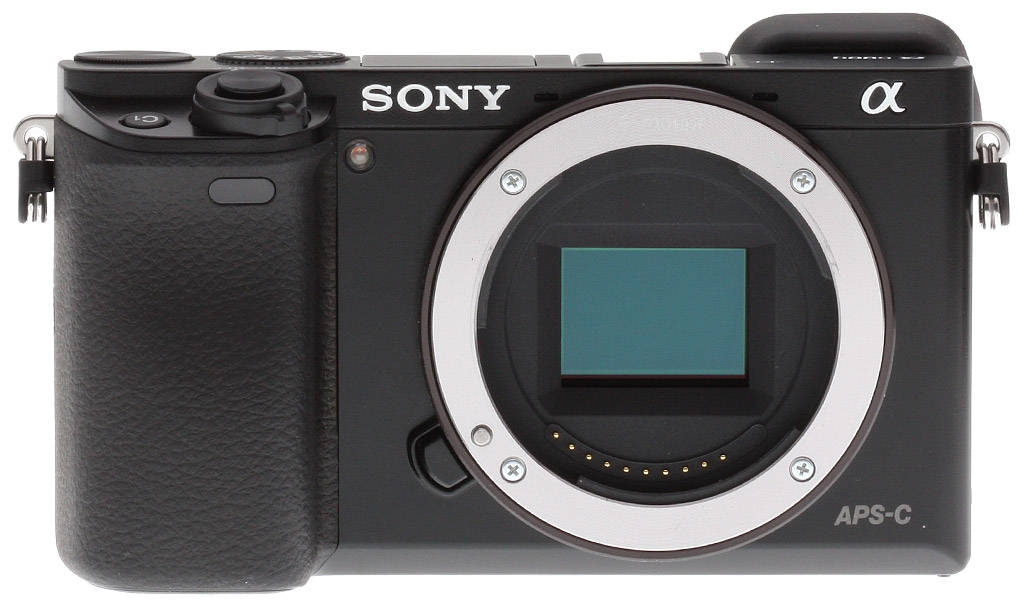
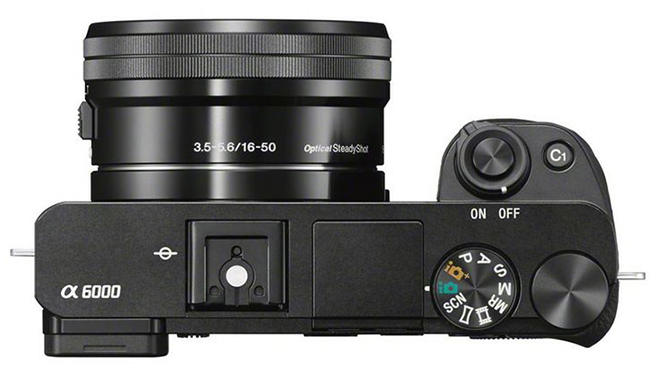
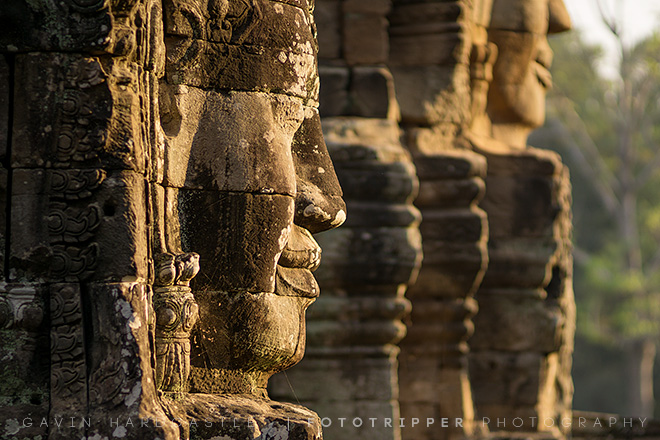
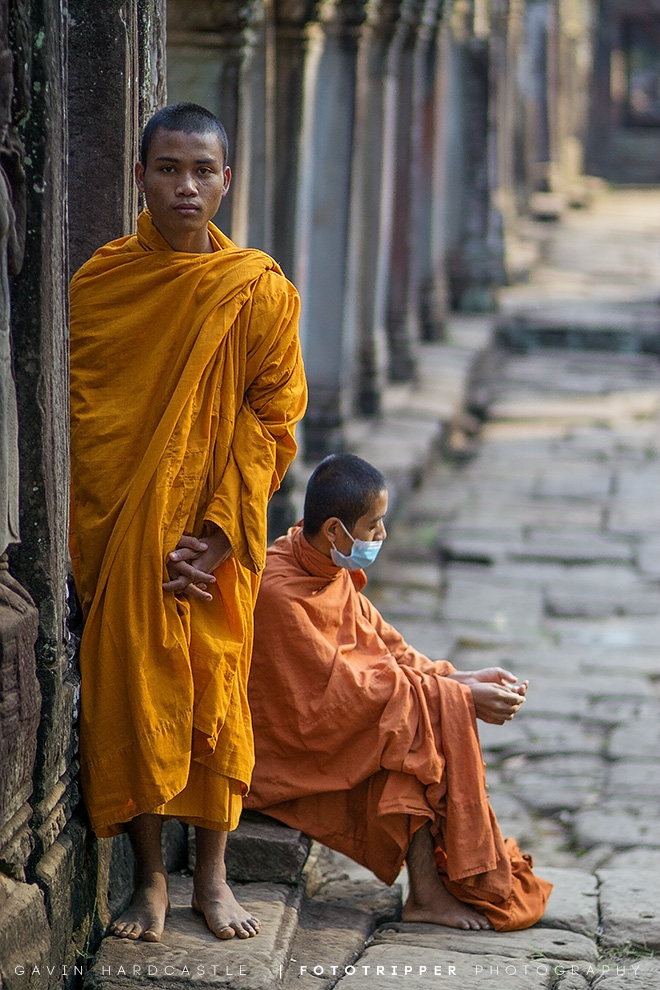

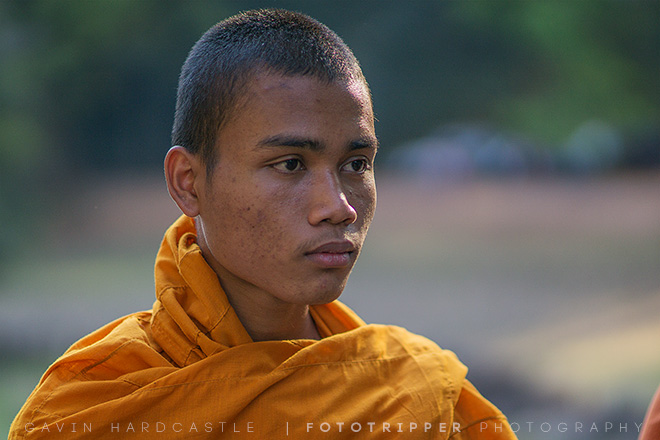
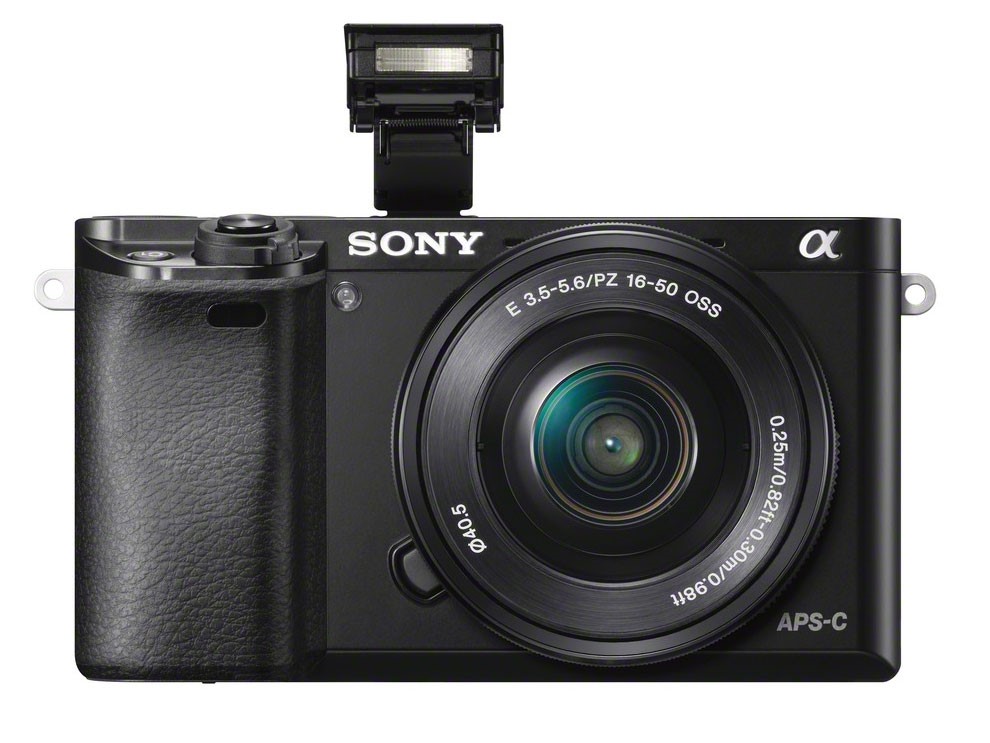
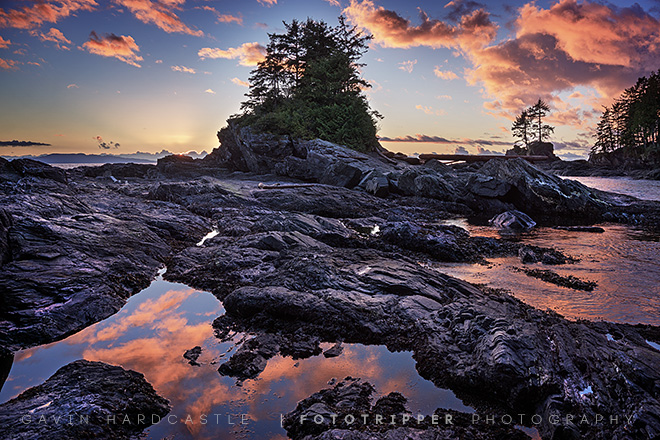
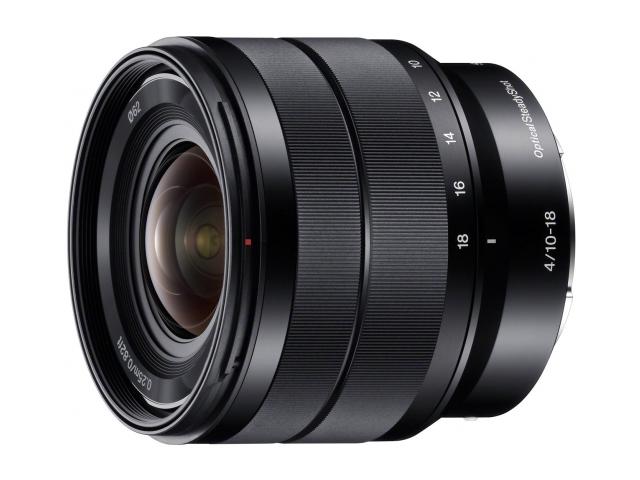
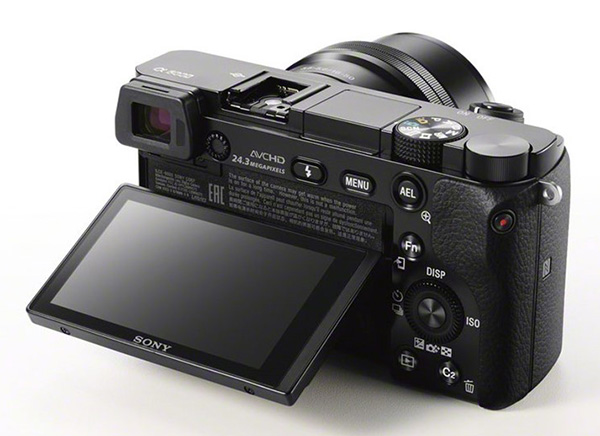
One of the things I love about the A6000 is the grip, feels brilliant in my hands. Plus the silent (almost) shutter is perfect for street photography. Yes battery life is quite poor, but you can get around it by buying some extra batteries online which last longer than the original sony one. The other tip is to shut-off the screen and use the viewfinder only. It’s quite a good viewfinder. For nocturnal photography either you use the tripod so you can exposure for longer and reduce the iso, or you’ll have lots of noise. But if your priority is not low light conditions then the sony a6000 is indeed a very good camera.
Thanks Miss, I didn’t know you could get batteries with extended life. Is there a particular brand or model? Some people say that using the EVF uses more battery than the LCD. I can’t say I’ve noticed any difference, either way the battery life is 1 hour max.
Looking for macro lens. Need automatic focus. For a 6000. Any suggestions.
I confess I’m no macro guru Ks so I can’t offer much help. If you didn’t need the AF you could use an adapter to slap on pretty much any macro lens.
what would you prefer when you have only two choices with Nikon D5500 and Sony a6000.
If you don’t already own Nikon lenses I’d go for the Sony. If you’re already invested in Nikon you might want to stay in that camp.
What do you think about the kit lens?
Thanks!!!
It’s not very sharp, vignettes like crazy and it’s best sharpness is at f/8.
Does it make sense to buy sony a6000 when I already have Nikon d80. Nikon is already 10 years old and I am not sure if it can compare with sony.
It makes total sense.
Does anyone else have trouble seeing through the viewfinder on the a6000? I love how small and light the camera is, but the fact that I cannot see what I’m trying to shoot is irritating. I also have a Canon 6D and have no problems with it.
Hi Esther, you can see what you’re shooting either via the EVF or the LCD on the back of the camera. If you’re using the LCD make sure you don’t cover the EVF with your thumb/finger or it’ll turn it off so you won’t see a thing. You can also adjust the brightness of the screen when shooting in bright daylight but I would advise looking through the EVF on bright days.
Hi, Gavin. Thanks for the detailed entries on your site, both on gear and everything else.
I’m a full-time photojournalist who uses the Canon 6D at work. I like having full-frame capability again and I love the low-light ability of that sensor. We’ve had a few mechanical issues with these cameras.
I’m looking for a single camera that will do everything (or close to everything) I need. Portraits, some action, off-camera flash, etc., lots of control. And since this will also be my travel camera, portability is a big plus. (Yes, I’m asking a lot.)
I own my own Canon 16-35/2.8, 70-200/2.8 and 50mm/1.8 lenses plus Canon flashes and ST-E2 transmitter.
From what I can tell, both the a6000 and the new a6300 would cover most of the bases, though I wouldn’t have flash metering. So some questions for you, based on your use of the a6000 and a7 series:
1) How’s the performance in low light with high ISO?
2) Can you be more specific on the disappointing performance of high-ISO action shots?
3) What adapter(s) do you use to add your Canon lenses to your Sonys? Any problems? There are mixed reviews about how successful this is and success seems to vary widely by brand and even model. I don’t want to lug my heavy lenses everywhere, but it would be a nice option to have in some situations.
My budget for my new camera and related lenses, at least to start, is about $5,000. So I’m trying to decide whether it’s worth the leap to Sony and, if so, if I should go after an a7-series (a7RII is overkill for me in price and megapixels) or pursue the a6300, which apparently will have more improvements over the a6000.
Thanks.
Hi Duke,
Well, my earlier replies to Kosta about buying decisions still hold true but I’ll answer your questions.
1 – for a $500 APS-C camera the high ISO performance of the A6000 is amazing in low light astrophotography. You’ve really got to factor in that price point.
2 – My disappointment of hand held portraiture at High ISO was more in comparison to the A7R and A7RII which are both full frame beasts. If you had some lights and reflectors you’d probably have no such issues.
3 – I use the Metabones adapters but these days there are plenty of other to choose from so be sure to shop around. I’ve found however that I get best results with native Ziess/Sony lenses and I’m slowly phasing out my adapted Canon glass.
Good luck in your choice and thanks for commenting.
Gavin
I’m looking to get back into photography after about a 15 year hiatus. I enjoy shooting a little bit of everything. Some landscape, nature, sports(tennis/baseball), and some city shots. Maybe even some night sky shots. Can’t decide between a mirrorless and a DSLR. I don’t have any lenses and I’m not partial to any brand. Just want a good camera to get back in the game.
Totally depends on your budget and personal requirements. I’d start by deciding which of the types of photography you mentioned is the most important and then do your research with that as a priority. No one camera is the best for ALL purposes so there’s always a compromise. I shoot with Sony because of the excellent image quality but I have to accept their annoying functionality as a compromise.
I am a photography novice and would love to take some beautiful wide angle shots of the ocean and incoming waves – I’d like either a subtle fish eye or none at all. With a tight budget ($2-300 range) – which wide angle lens would you recommend? Thanks.
I am from India and I would like to know about the lens options for portrait photography for Sony A600. Currently I own a Canon 70D and primarily use either canon 50mm f1.8 STM or canon 24mm f2.8 STM for my work. I wanted to jump to mirrorless cam since a long time now so I wished to inquire if there are any lenses available in the same price range for A600 as well which I may be able to use without the adapter. Thank you
Hi Akshay, you could adapt both of those lenses to work on the A6000. I used the Sigma 85mm 1.4 for Canon mount as well as the Sony FE 55mm. Both of those are for full frame so there’s a significant crop factor but they worked very well.
Thank you for your help
Hi Gavin
I am new to photography , I love everything about the a6000 and it’s compactness. Can I get your thoughts about its performance for landscape photography (granted I will buy a lense for landscapes). I do plan to take many night time city scape photos with it.
I love the a6000. It’s great for landscapes and cityscapes. The Sony 10-18mm is a great combo and it fits in a tiny bag. For astro it’s a little noisy but you’d expect that on a crop sensor. For the money you can’t buy a better landscape camera.
Hi Gavin,
I’m looking at getting my first dslr or mirroless camera for my landscape photography, I used a canon 700D for my partners sisters wedding was hired out but want something better , I’m looking at nikon d5500 and the a6000 and maybe the 760D, which would be best as have no money invested in any eco system yet
To be honest I don’t know a great deal about the Nikons but the A6000 is a brilliant camera for the money and works perfectly for landscapes. I should be getting a commission from Sony. Sony are you reading this?
I just recently got the a6000 body and have the 50mm F/1.8 OSS E-mount lens on the way. I originally got the body with the kit lens, but realized I wasn’t going to use it once I got new lenses, and was able to save a couple bucks on the initial purchase. Two questions, if you don’t mind:
1. I got this because I have a child on the way, and read the 50mm was a great lens for portraits and pictures of people. I am planning on mainly using this camera for my family, whether it be portraits, group photos, vacation, etc. With that in mind, other than the 50mm, what would you say is another “must have” lens for a dad photographer,
2. I’ve seen on amazon and Gary Fong bounce cards/panels for the a6000 for around $15-20. Worth it?
Thanks in advance!!
Hi Brian,
I can’t comment on the Gary Fong thing and I’m not much of a portrait photographer but the 55mm is one my fave lenses. There’s also the Zeiss Batis 85mm which delivers outstanding quality but with a more hefty price tag. I also used the Sigma 85mm on the A7R2 with great results but that needs an adapter.
I just received the a6000 for Christmas. I take mainly take flower and garden photos for my magazine and newspaper articles, plus landscapes, of course. Which lens would you recommend for my needs beyond the 16-50 kit lens.
I like the Sony 10-18mm for the A6000 because I can also use it on the A7RII for a super wide FOV.
I am planning to buy sony a6000 with kit lens (18-50mm). I want it mainly for travel and a bit of nice family/friends photos. I wouldn’t mind if the portraits aren’t that sharp, I’m not into that. I don’t have budget beyond 500$, is this a good choice?
It is.
i am new at photography and i was looking to buy my first real camera. i have been looking into this one and i will mainly be using it for portrait photos. just going out with some friends to take photos, senior pictures, prom pictures, etc. would you suggest this would be a good camera for what i would be using it for?
It’s a good start